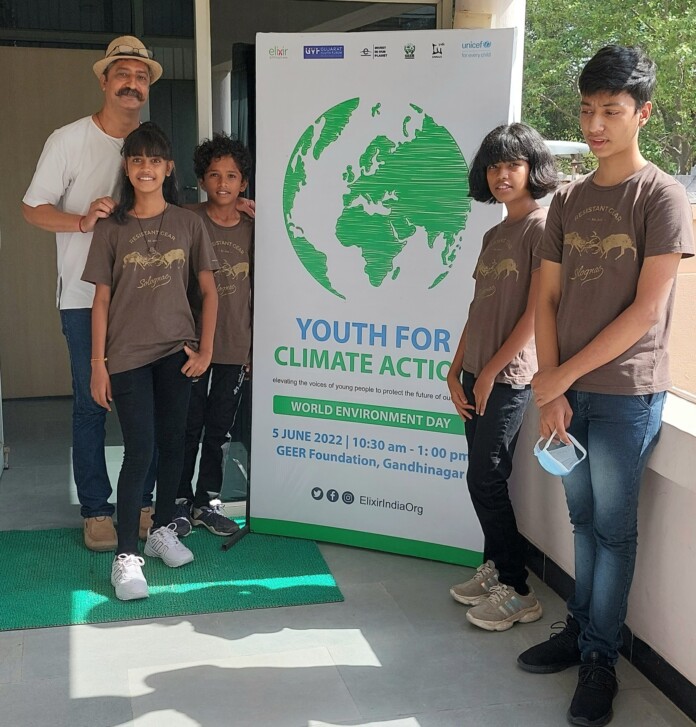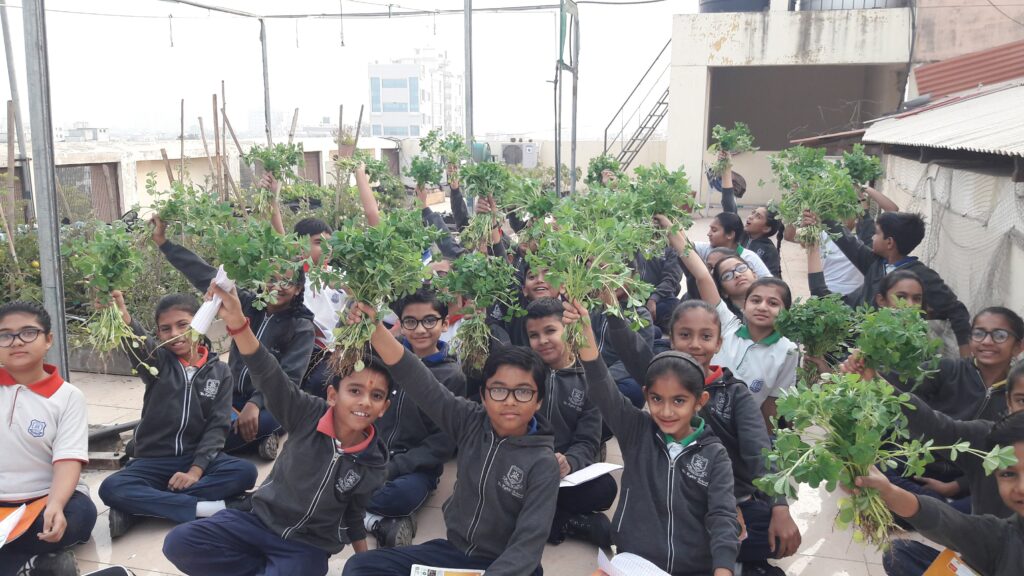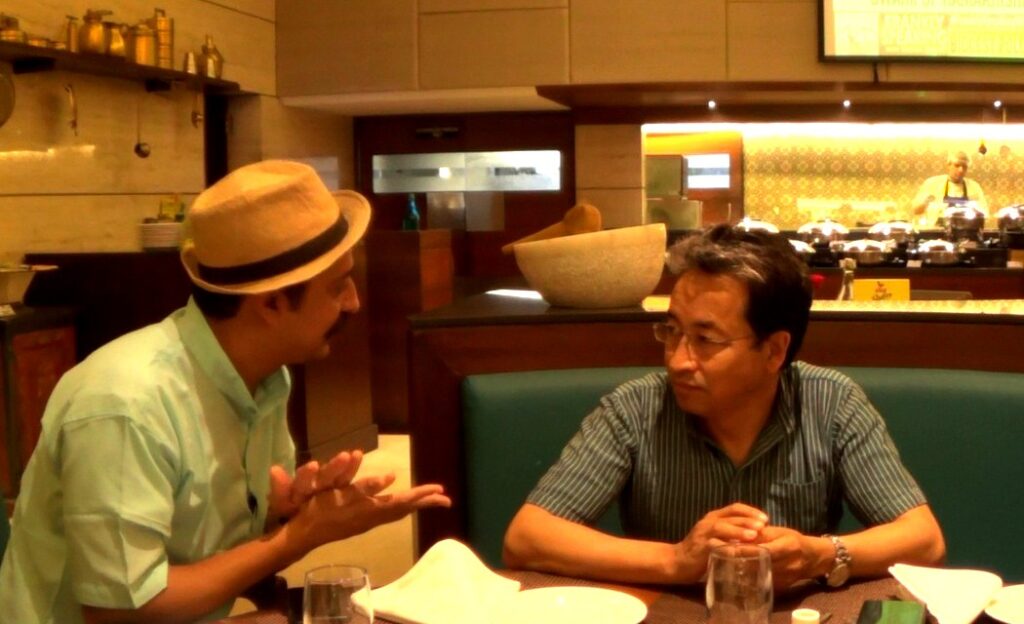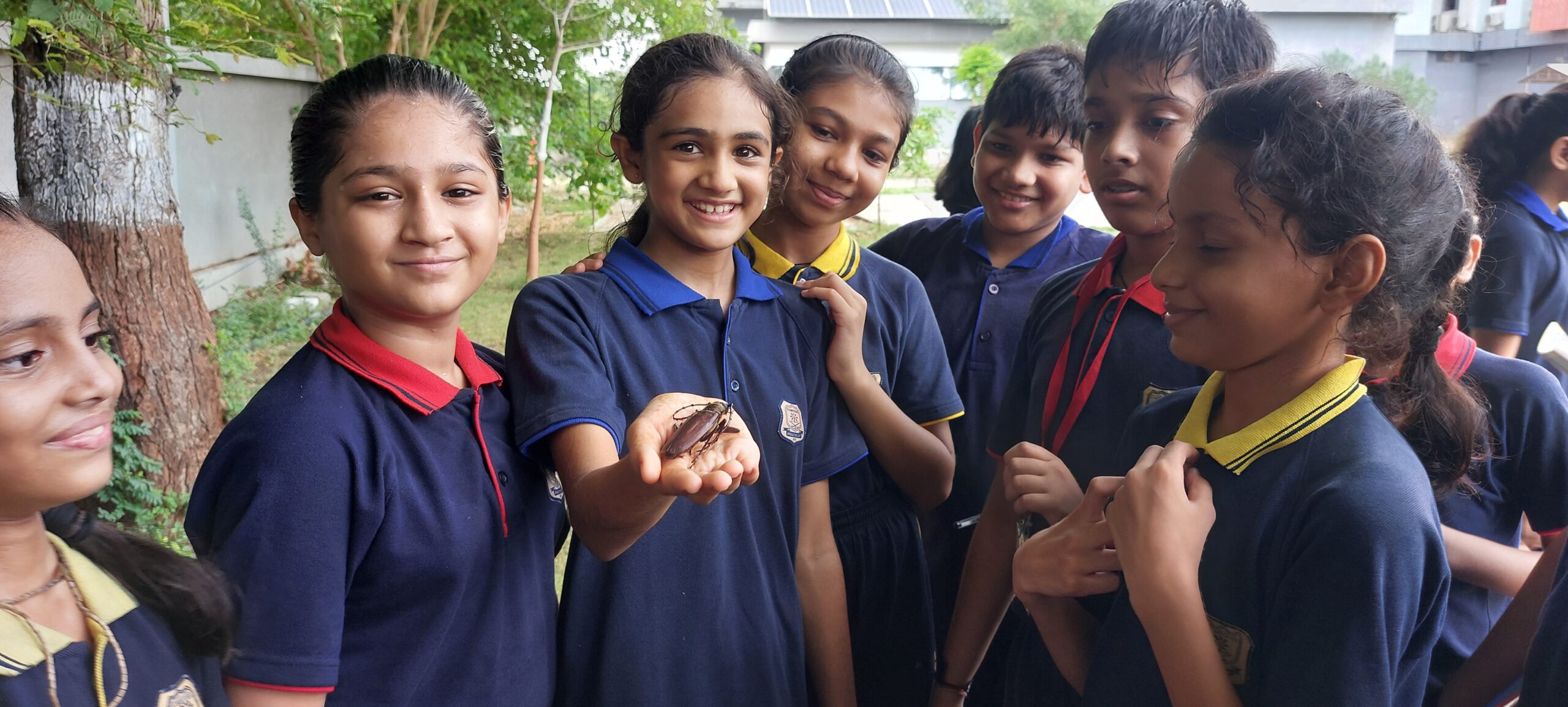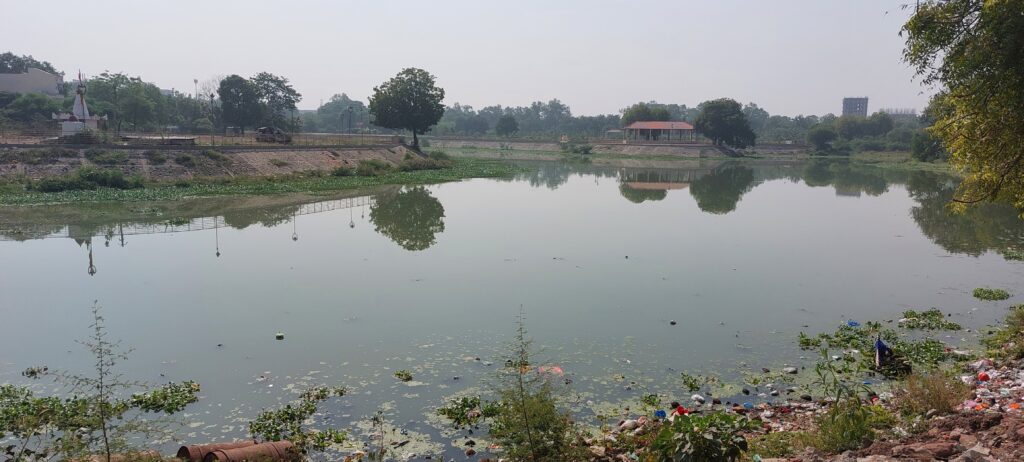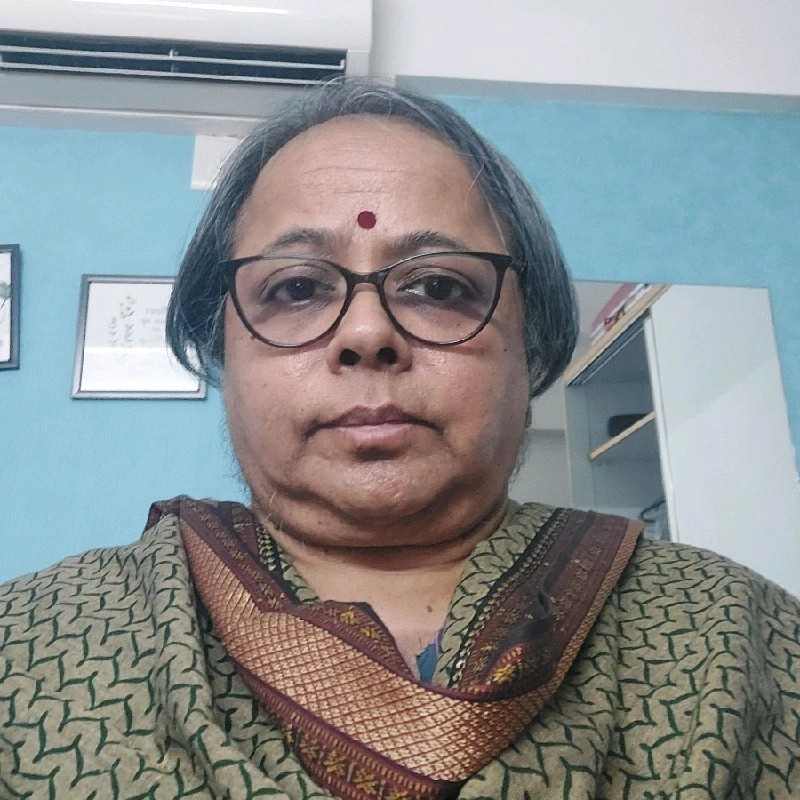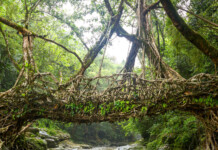Did you have an interest in environmental issues from childhood?
I grew up in the IPCL (Indian Petrochemicals Corporation Ltd) colony in Vadodara where my father worked. It was a lush green colony. I witnessed the magic of nature first-hand – birds, butterflies and snakes. I developed an affinity for the natural environment. My childhood observations made a deep impression on my mind. We used to grow many plants in our garden. In school, after an aptitude test, I was told I should develop a career in gardening-related fields.
Tell me about your school and college days
I attended the IPCL school and later M S University. I used to be a loner in school for many years. But I had an equation with nature. I would even talk to the natural elements!
In my second year of college, I took part in a play. Being part of a theatre group was wonderful.
I opened up and there was a striking change in my personality. I believe strongly in the transformative power of theatre. Even today, I use theatre with my students.
My academic life was unremarkable. I took arts in college. I was a very ‘consistent’ student in terms of percentages (with a laugh). I always stayed between 40-50 percent! I believe my education started when I completed my master’s.
Journalist to environment educator – how did that happen?
I stumbled into journalism. I joined ‘Times of India’ in the circulation department. Then I started writing for marketing supplements. I was a keen observer and had good story ideas. My journey as a journalist started in 1995 and continued till 2012. From being a nobody, I became an assistant editor in ‘Times of India’.
In 2011-12, I started thinking about environmental education. I wrote emails to myself on environment-related topics and saved them as drafts. I had written several articles for ‘The Times of India’ on deforestation, human-animal conflict and encroachment on forest land, among other subjects. After a long stint in journalism, I was in the public relations (PR) field for a few years. When I quit all that in 2015, I had a roadmap of what to do. It was like an inner calling that I had been preparing for. In 2016, I set up KEDI.
What motivated you to set up KEDI?
Children learn about the environment either from textbooks in school by observing and learning, or at their homes and in their surroundings. I have tried to make environmental education simple and actionable.
I knew I had to deliver something actionable and not textbook education. Also, I knew the occasional workshop would not make much of an impact. We work with children in classes 4 to 8 studying in five schools in Vadodara. When I framed the curriculum, I was not in academics. It took me six months to design the curriculum.
I did not want to register KEDI as an NGO. I wanted to keep it informal and handle it alone. KEDI works with children of both government and private schools. The word ‘kedi’ in Gujarati means a small path that takes you to your destination. Quite apt. Then I came up with the acronym. I, my wife Kruti and another educator Tejal handle the activities of KEDI. We do not use textbooks. It is 100 percent activity-based learning. KEDI classes are mostly conducted in the outdoors. I did not know how schools functioned. Some schools had a problem understanding the purpose of environmental education. On one occasion, the school harvested the crops grown by the kids and gave them to a trustee! The children had been waiting eagerly for the harvest and were very disappointed.
What activities do you do at KEDI?
I believe in action – starting now. We all know the problems facing the environment. But what action can we take to mitigate the problems like air pollution and chemicals in food? Children are being told about the problems but not the solutions. My curriculum tells them what action they could take.
In the first year, agriculture is the focus. The children get to understand soil structure. They do not hesitate to touch cow dung, break it and mix it with the soil. They sow the seeds and watch over the seedling and plant like it was their baby.
In the second year, we teach them about insects and pesticides while the third year is about birds. In the fourth year, the focus is on trees and water bodies.
Tell me about the wetland conservation work you do with kids
I started teaching environmental journalism at M S University and Navrachana University and give guest lectures at other colleges. I use the same hands-on approach with college students as I do with school students.
On one of the field trips we visited a small water body near the village of Bhayli. The condition of the water body was poor. From 2018-2024, a small team of kids from the locality helped me clean up the water body. We have worked on reviving the wetland. The children learnt about wetland ecology and birds.
A census of migratory birds was conducted at Wadhvana, a Ramsar site near Vadodara. One of my students Nandani was the first-ever girl student, and the youngest from Gujarat, to be included in the official activity. Motivated by our work, the forest department is making a short video on how local kids can save the wetlands.
Since literacy in the area is low, I have designed a three-year special curriculum on basic literacy levels, understanding local wetlands, and understanding migratory birds.
How do children respond to KEDI classes?
Whether they remember anything else or not, schoolchildren remember KEDI classes. They come and meet me even after finishing their school. In college, when my former students want to do projects they seek my guidance.
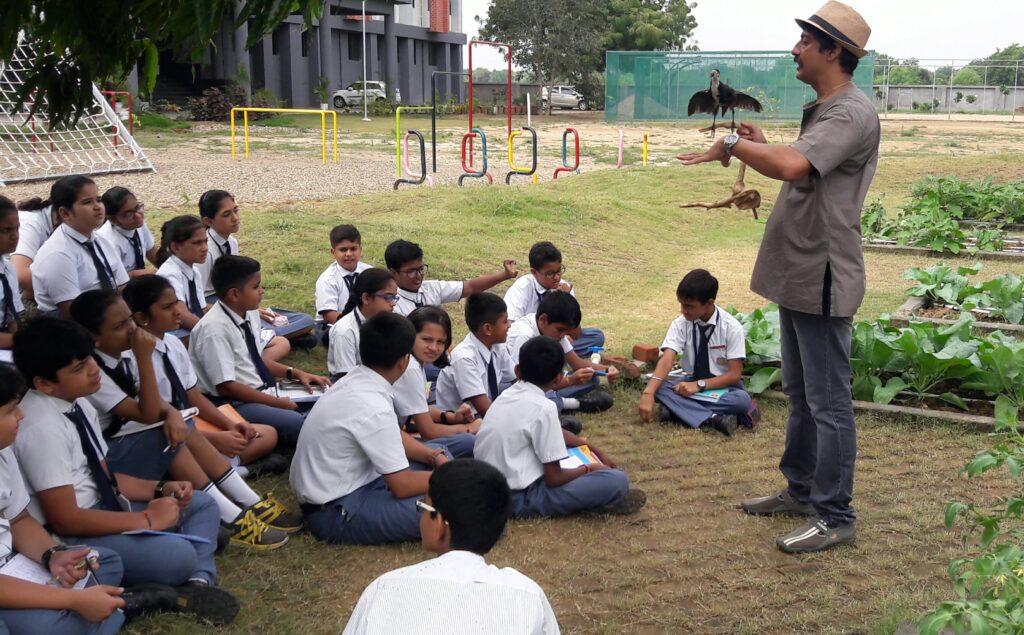
How can parents raise environmentally conscious children?
My ultimate aim is to involve parents as children cannot take action unless parents are involved. I give my kids fun-filled activities to share with their parents. In several cases, children have taught their parents lessons in sustainable living. They tell their parents not to accept plastic bags from vegetable vendors, to switch off the ignition at traffic junctions to conserve fuel and reduce air pollution, and to minimize the use of air-conditioners. Once, a class V student told me how she convinced her mother not to remove a pigeon’s nest from the balcony.
Now, for what parents can do. They can take their children to a park and let them hug a tree, touch the leaves and feel the temperature difference. They can learn about the local fauna and flora and impart this knowledge to their children. Above all, irrespective of where you stay, I would advise people to grow their vegetable garden.
Tell me about the awards you and KEDI have been given.
I received the ‘Inspiring Climate Educator Award’ in 2019 for my innovative teaching methodology. In the same year, I was honoured with the Environmental Excellence Award for my contribution to the field of environmental education and activities in schools. KEDI has been felicitated by the forest department for wetland conservation.
What could be done to mitigate climate change?
I would suggest three things that could be done to mitigate climate change. One, empower children. They are the future. Their thought process has to change. Two, children and youth need to be involved in policy-making. Three, parents need to take positive action for the environment and be role models. Only then will the future that they want for their children will be realised.
Aruna Raghuram is a freelance journalist based in Bengaluru. She writes on women’s issues, environment, parenting and social enterprises.


